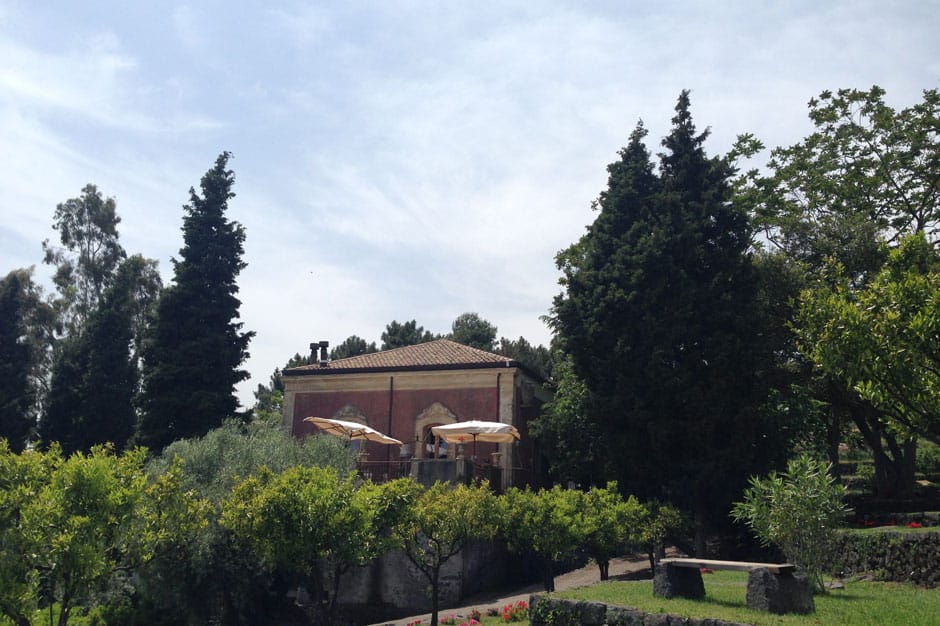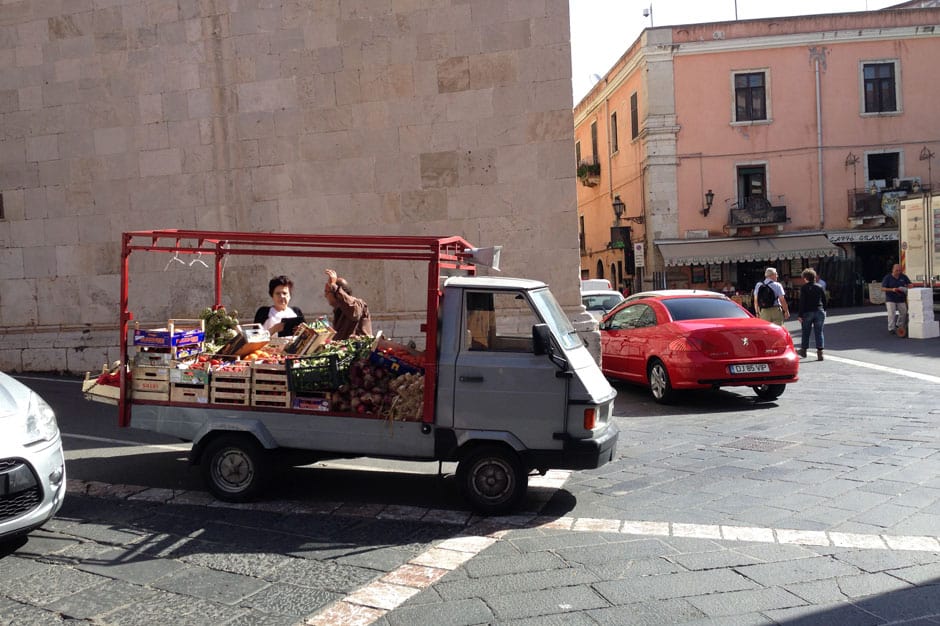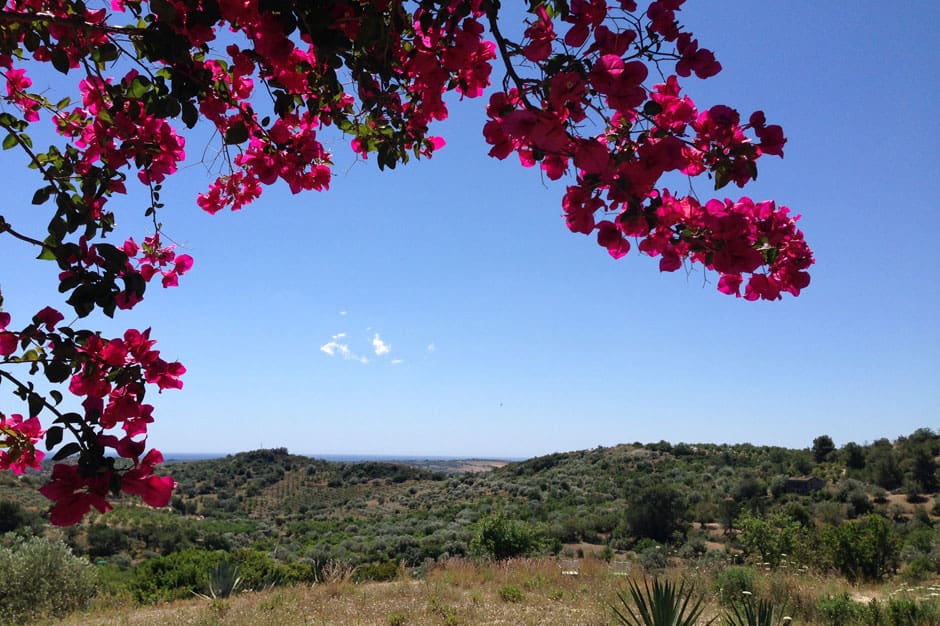Join/
Travel Spotlight
Six to Know: Key Tips for Travel in Sicily
In Palermo e una Cipolla, Roberto Alajmo argues that the Sicilian city is like an onion whose layers are peeled to reveal yet more layers. The same could be said of Sicily as a whole. Here are some of the main tips to consider when planning a trip to this incredibly varied destination, home to everything from Greek temples to glorious seaside escapes. (See a Sicily Slideshow.)
1. Sicily is big.
“Two weeks only in Sicily?!” was a question I heard a lot before I left on my trip. The truth is, I easily could have spent another two. The driving distances are significant: from the east to the west coast, it takes about five hours, and that’s along the highway, when what you really want to do, is meander along some of the world’s most glorious country roads. Another thing to consider is the sheer range of experiences offered in Sicily. Here are some highlights:
Best for: history, culture, Sicilian life
Travelers who really want to understand the history and culture have to visit this high-energy, urban mess of a city, with fantastic food, art and architecture. There's nothing organized or high-end about it, but if you have a sense of adventure, it's one of those glorious places where you can just blend in and feel like a local (Palermo gets a fraction of the tourist groups of Syracuse or Taormina).
Southeast and southern coast
Best for: bucolic countryside, Baroque towns
This area contains many of Sicily's most famous sights, including the late Baroque towns of the Val di Noto, the mosaic-covered Villa Romana del Casale, ceramics town Caltagirone and the temples and Greek architecture of Syracuse and Agrigento. It's a massive place, so it's best to be based in one spot and to rent a car and take day trips. Of course, the coastline fronting the Ionian Sea is glorious.
Taormina & Mount Etna
Best for: wine, hiking, luxury resorts (Taormina)
Located in northeastern Sicily, the small resort town of Taormina is the island's most well-known and most-visited. It's also the most touristy and can get mobbed during the summer months, especially during the days when large cruise ships dock in its bay. Taormina is home to Sicily's two most luxurious hotels. A 30-45 minute drive from Taormina is the massive Mount Etna regional park. There are many small agriturismo and family run B&Bs in this part of Sicily, with its lush and verdant landscapes that produce top-rated wines.
Western Sicily
Best for: off-the-beaten-path exploration
The western part is best for return visitors, as it's a mostly unexplored and vast terrain. Closer to Palermo, on the northwestern shore lies the pretty town of Erice, a hilltop town with sweeping views that's the home of cloistered nuns who make delicious sweets.
Best for: seaside island holiday
Seaside and island aficionados should consider this archipelago of seven islands, including jetsetting Panarea, tranquil Salina and tiny, unspoiled Filicudi, as a perfect add-on to their Sicilian sojourn. It's best done by boat, though there's also a fabulous resort (Capofaro) on Salina.
In short, decide what the trip's focus should be and then plot the best itinerary, knowing that you will probably not get to see everything on your list.
2. Sicily is not high-luxury.

For picky travelers, the main challenge of Sicily is that there are only two true five-star luxury hotels and both are in Taormina, the island’s most touristy town. To wake up in gorgeous Syracuse, buzzing Palermo or in one of the late-Baroque hilltop towns, you have to compromise (in some places more than in others). Many of the smaller towns have fine, family-run bed and breakfasts or even the occasional chic boutique hotel, like the lovely 7 Rooms in Noto. Palermo is tough, as the central hotels are basic and the resort just outside of the city center requires an expensive cab ride.
For me, walking around deserted Ortygia (Syracuse’s old part of town) near midnight under a full moon, sitting in a velvet-clad box for an opera in Palermo’s Teatro Massimo, and having the stunning cathedral of Monreale (near Palermo) practically to myself were experiences I gladly paid for with a little less comfort. But it's a personal preference and should be seriously and honestly weighed.
3. Sicily is an adventure (and a little Italian goes a long way).

Because the island has not been overly developed for tourism, exploring is still unscripted, making it a destination for travelers who can go with the flow. Speaking a little Italian helps tremendously when getting around. Luckily, locals are kind hosts who are eager to show off their island and make travelers feel welcome. At one restaurant in Modica, a solo diner ended up practically sitting at our table, explaining the local cuisine when I asked about the menu. At a gas station en route to Palermo, a dashing Roberto walked me through the bizarre system of Sicilian self service (while a car full of ladies dressed in Sunday best patiently waited). And in Noto, a bevvy of elderly gentlemen descended upon my husband when he parked in a spot they knew would be off-limits due to a festival later in the day.
4. Sicily is surprising.

Who knew that Sicily has six UNESCO World Heritage sites? That Palermo, mainly cited for its traffic, trash and Mafia, has a wealth of churches filled with absolutely awe-inspiring art? That Agrigento, Segesta and Selinunte can rival the archeological sites of Greece and Turkey? And who would believe that even well-known tourist attractions like Villa Romana del Casale and Syracuse's Greek Theater remain relatively uncrowded, especially during the off-season. Every single day of my trip brought along aha-moments of discovery, from the heartbreaking beauty of the Val di Noto (favorite drive: Modica to Noto along SP 17) to unexpected flavor combinations during the many memorable meals (a pasta sauce of sardines, tomato, bread crumbs, raisins and capers).
5. Sicily is not Italy.

Thanks to its strategic location and incredible natural endowment, Sicily has had a long list of conquerors and rulers, from Greeks and Romans to Byzantines and Arabs, with a dash of German, French and Spanish in the mix (is it a surprise that today's locals identify as Sicilian first, Italian, a distant second?). Most influential were the original immigrants, the Greek (750 BC – 242 BC), and later the Arabs (827-1091) who both left brilliant reminders of their existence all across the island.
After Italian unification in 1861 (some 85 years after U.S. independence), a number of devastating land reforms drove the bulk of Sicily's peasant population into abject poverty. There was a mass exodus, and at the turn of the 18th century, Sicilians were among the largest groups emigrating to the United States. In 1943, the island saw the Allied Invasion (a sort of practice run for Normandy) by U.S. and British forces, which drove the German army back north but also heavily bombed the island, flattening whole Palermo neighborhoods. The post-war years' vacuum of power, as burgeoning political parties struggled to gain footing, witnessed the fast ascent of a formerly small-time band of criminal families. Books have been written about the savvy wheeling and dealings of the Cosa Nostra in the post-war rubble of 1950s Sicily. The mafia's tight grip on the island, at its bloody height during the 1970s and '80s, has only recently been loosened.
For the modern-day explorer, this patchwork of different influences means a rich journey of discovery. Every region has its own culinary specialties, from sardine-laced pasta along the eastern coast to ricotta-stuffed cannoli in Palermo and crispy grilled lamb at Mount Etna. The layers can also be seen in the architecture (in Palermo, there are neighborhoods where the street signs are written in Italian, Arabic and Hebrew, reminding of the city's gilded age under Arab and consequent Norman rule). All this variety makes for a fascinating journey, and there is a long list of excellent books and films to pore over before you go.
6. Sicily is time travel.

When you’re of a certain generation—or maybe it’s all generations—you know the drill: parents and their friends talk about destinations and how nothing is what it used to be. “When we went…” start many a story of authentic seafood restaurants manned by a fisherman’s family; of major sights practically deserted; of easy access to scenic coves that have long since turned into exclusive beach clubs. Anytime my parents talk of traveling in their day, the trips sound a million times more spontaneous, authentic and adventurous than mine.
Sicily today is straight out of my parents stories about 1970s Italy. There are predominantly mom-and-pop businesses, and no one seems keen on (or good at) ripping off visitors. There were meals during my trip where I wanted to beg the restaurant owner to charge more, and quaint cafés where I wanted to tell the staff to start selling those cute espresso cups because people would buy them. At Mount Etna, one of the world's most renowned wine-making regions, there are few organized tasting rooms. But if you ask, everyone has a friend who can make an appointment for a much more personalized visit.
The island is unapologetically set in its ways, as universally sighed over by many of today's movers and shakers who want to stir up some lasting changes, especially in the hospitality industry. But for visitors this means a preserved slice of old-world travel that is hard to find these days. A friend, based in Italy, emailed me some tips before my trip, writing: "At Piccolo Napoli in Palermo, be sure to have the ricotta-filled cannoli. I cried while eating it, because it tasted like the dessert I used to eat with my dad’s family growing up." Sure enough, I had my own Sicily moments that moved me to tears. The island does that—it challenges you, gets under your skin, invades your dreams and ultimately makes you accept that you will never know it fully. All you can do is plan a return trip to peel back one more layer.
Plan Your Trip With Us
We only feature hotels that we can vouch for first-hand. At many of them, Indagare members receive special amenities.
Get In Touch


